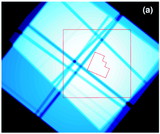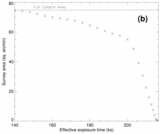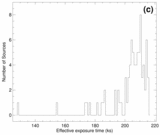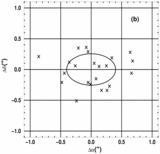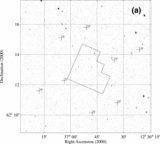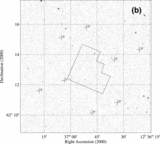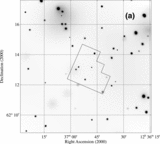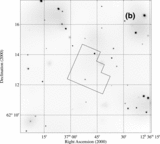Image Details
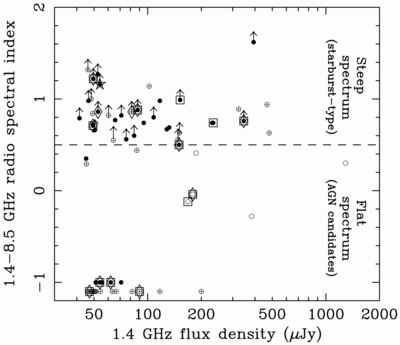
Caption: Fig. 14.
1.4–8.5 GHz spectral index vs. flux density at 1.4 GHz for radio‐classified starburst‐type systems (filled circles), AGN candidates (open circles), and systems of unknown type (circles with crosses inside) detected at 1.4 GHz in the Caltech area (R00). Markers with squares (diamonds) around them indicate that the corresponding source has been detected by Chandra in the soft band (hard band). One 1.4 GHz source, J123711.9+621325, was only detected in the full‐band data (see Table 8) and is marked with a star around it. The horizontal dashed line drawn at a 1.4–8.5 GHz spectral index of 0.5 denotes the typical value used to separate starburst‐type systems and AGN candidates (e.g., § 6 of R00). Symbols located at or below −1 along the ordinate do not have measurements of their 1.4–8.5 GHz spectral indices. Note that the X‐ray detection fractions, in both the soft and hard bands, are comparable for both the starburst‐type systems and AGN candidates.
Copyright and Terms & Conditions
© 2001. The American Astronomical Society. All rights reserved. Printed in U.S.A.


